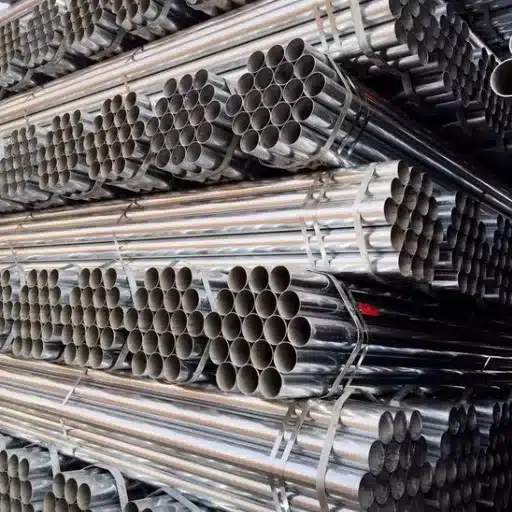Like any other sort of steel, steel tubing possesses certain properties that make it suitable for various applications. Galvanized square steel tubing is enhanced by the collaborative efforts of numerous civil engineering professionals because of the unparalleled strength and corrosion resistance it boasts. In this article, I will attempt to provide an all-encompassing analysis of galvanized square steel tubing, including its properties, advantages, common uses, and considerations for other projects. Advanced experts and civil engineering college students will find rationale to augment their basic understanding of investment steel tubing, along with its various purposes and economic advantages.
What Are the Benefits of Galvanized Square Steel Tubing?
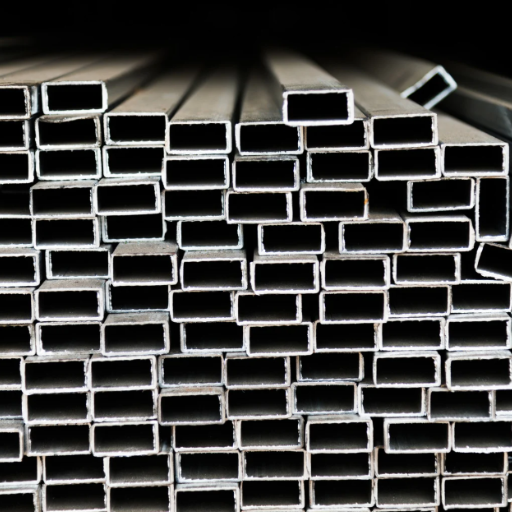
Galvanized square steel tubes have remarkable resistance to corrosion, remain useful under challenging situations, and maintain their indoor and outdoor structural integrity. The Zinc coating on the tubing offers rust protection, which enables the steel to endure damage from the environment, thereby prolonging its lifespan. It’s also economically favorable due to its optimal strength-to-weight ratio, boasting enhanced performance while containing costs; in addition, it’s widely applicable in construction, manufacturing, and agriculture. Moreover, its long-term durability, paired with low maintenance efforts, leads to minimized lifecycle expenses, cementing its practicality for numerous projects.
Understanding Corrosion Resistance of Galvanized Steel
it is without a doubt my assertion that the value of the corrosion resistance offered by galvanized steel is one of its strongest features. The reason for this is that the galvanized layer zinc coating performs like a protective shield by preventing the precipitation of moisture and oxygen that bring forth corrosion. Even in instances where the coating is scratched or chipped, the zinc has this unique self-healing feature called galvanic or sacrificial protection, which guarantees the protection of the steel. Such combined strength and toughness make galvanized steel dependable, cost-effective, and useful for prolonged use in various surroundings.
How Does Galvanization Make Steel More Durable?
steel is made much more durable with the added benefits of protection provided through galvanization, which enables it to endure harsh environments. With that in mind, I would put it like this for ease of understanding:
- Barrier Protection: A zinc coating provides barrier protection as it acts like a shield. It removes the steel away from the interfacing environment; therefore, moisture, oxygen and other corroding elements cannot gain direct access to the steel itself. The coating is a barrier in nature, which protects against wear and tear. From the perspective of protecting the equipment from everyday harm, wear, and damage, this line of defense proves to be beneficial and greatly reduces the level of abrasion.
- Galvanic Protection: Protection of this kind, also called ‘sacrificial protection,’ is one of zinc’s outstanding properties. Where the coating becomes scratched and or cut, the zinc remains and protects the core steel under it by corroding in its place. Zinc sacrifices itself for the steel, which brings many benefits to the longevity of the metal.
- Durability in Tough Conditions: The steel galvanized is very prone to dominating some of the most challenging areas, such as heavy rainfall and extreme humidity. Galvanized steel is salt and toxin-resistant, making it ideal for coverings in industrial and coastal areas. For outdoor use or areas with extreme exposure, the galvanized zinc coating proves to stand the test of time.
- Minimal Maintenance: In contrast to galvanized steel, other untreated steel is more likely to require constant repair due to corrosion over time. The efficiency alongside the reduction of maintenance makes the steel maintained in a much better condition for years.
- Enhanced Longevity: Galvanization of steel can extend its life to up to 50 years, even in harsh conditions that encourage rusting and corrosion. The comparatively longer lifespa,n coupled with lower maintenance, makes steel an economical choice for projects that are durability-centric.
These traits explain why galvanized steel is perfect for construction, manufacturing, and numerous other sectors. Durability is more than just enduring harsh environments; it includes the value of time and money over a prolonged period as well. Due to this aspect, it remains one of the most dependable solutions in the industry today.
Comparing Steel Pipe and Galvanized Alternatives
The primary difference for consideration between steel pipe and galvanized steel pipe is their resistance to corrosion and application. Galvanized pipes are primarily made with steel, which is softer and more malleable. Because of these properties, they can gather zinc coating to protect against rust. Thus making them best suited for outdoor or damp environments. Unlike galvanized steel pipes, steel pipes do not have a zinc coating, which makes outdoor use impractical. They are better suited for indoors, where moisture will not be encountered. While galvanized pipes are better suited for corrosive environments, they tend to be more costly to begin with, which makes the cost-to-value ratio difficult. Ultimately, the required output of the project, along with the environment, budget, and use, will dictate which pipe is more suitable.
How Is Galvanized Square Steel Made?
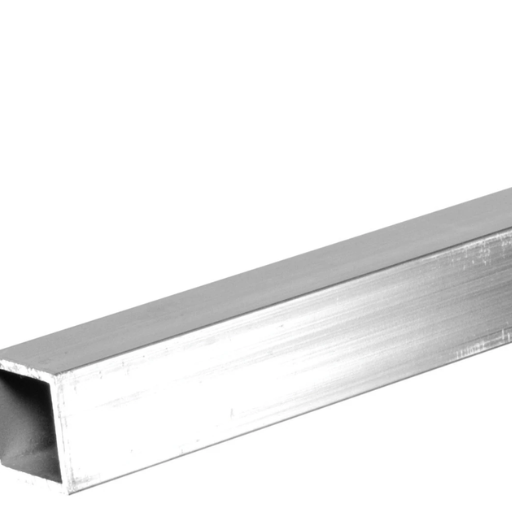
The creation of galvanized square steel begins with raw steel, which is shaped into a square using rolling or shaping processes and later undergoes thorough cleaning to eliminate oil, dirt, and mill scale. This is followed by hot-dip galvanization, whereby the cleaned steel is submerged in melted zinc. As the zinc coating adheres to the steel, moisture and oxidation are blocked, thereby protecting the steel surface. This procedure improves the quality and durability of the steel, making it fit for use in construction, infrastructure, manufacturing, and various other industries.
The Galvanization Process Explained
In hot-dip galvanization, the steel is first cleaned, then submerged in molten zinc: a protective coating that prevents corrosion binds to the steel’s surface. This process increases the durability of steel ,making it suitable for long-term application in a wide range of industries.
What Coating Is Used in Galvanization?
Zinc is the coating material that is primarily used for galvanization. As far as my experience goes, Zinc has proven to be unmatched when it comes to its adhesion to steel because it binds strongly and creates a protective layer that can shield the steel from corrosion. There is a metallurgical reaction between the molten zinc and the steel, which takes place when the steel is dipped in a hot zinc bath, resulting in the creation of zinc-iron alloy layers. These layers have increased strength and resistance to moisture, oxygen, and other environmental factors. This coating of zinc not only protects the steel from corrosion but also, economically speaking, helps improve the cost-effectiveness of quenched structures over time, as well providing protection in the long term.
The Role of Zinc in Galvanized Steel Production
I have learned that zinc is very important in the production of galvanized steel because it adds a significant amount of protection as well as increases the lifespan of the material. These are the steps explaining the importance of zinc:
- Barrier Protection: Zinc acts as a barrier that prevents the underlying steel from coming into contact with moisture, oxygen, and chemicals. It inhibits the formation of rust and corrosion.
- Sacrificial Protection: Zinc’s capacity to provide sacrificial protection is one of its most salient characteristics. Zinc will always corrode before the steel does, protecting the steel underneath, even if the outer zinc coating is scratched or damaged.
- Durability: The galvanization of steel forms zinc-iron alloys on its surface, which increases the hardness and wear resistance of the steel, compared to untreated steel. Such alloys significantly improve the durability of a structure in harsh conditions such as snow, rain, or humidity.
- Cost-Effectiveness: Coating steel with zinc reduces the frequency of maintenance or replacement required for the steel, increasing its affordability in industries that depend on durable materials.
- Sustainability: The zinc in galvanized steel is recyclable, and the steel itself can often be reused or re-galvanized, making it more environmentally friendly in construction and manufacturing.
Understanding the factors involved elucidates the importance of zinc in galvanized steel within diverse industries necessitating both functionality and economical pricing.
Where Is Galvanized Square Steel Tubing Used?
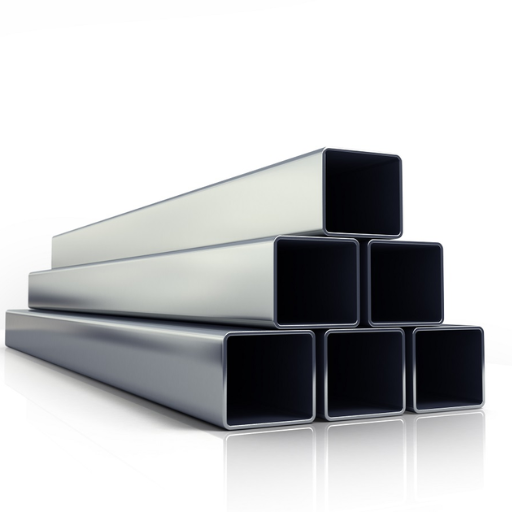
it is clear that every industry makes use of galvanized square steel tubing. In construction, it is commonly applied to provide support for structures and is even used in railings and fencing due to the strength and durability it has. This type of tubing is also utilized in the fabrication of automobile frames, agricultural equipment, and even furniture owing to its aesthetic appeal and functionality. The corrosion resistance for this type of tubing works well both indoors and outside, and coupled with the economical costs for these applications, the long-term performance in harsh environments is guaranteed.
Common Applications of Galvanized Square Tubing
Galvanized square tubing is frequently utilized in construction for structural supports, railings, and fencing because of its strength and durability. Its use is also prevalent in automotive frameworks, agricultural implements, and furniture making, where utility and aesthetics matter. It is economical because of its varied versatility, which alongside corrosion resistant features ensures dependable usage in outdoor and industrial settings.
Why Choose Galvanized Steel for Structural Projects?
Galvanized steel is an unrivaled material as it combines durability and low maintenance. Throughout my career, I have witnessed corrosion-resistant coatings protect materials from harsh environmental conditions, greatly increasing their lifespan. Furthermore, the strength-to-weight ratio makes it efficient for bearing large amounts of weight while still being cost-effective. This material is truly a feat of engineering as it guarantees safety and long-term performance in demanding situations.
Uses of Galvanized Steel in Agricultural Settings
The use of galvanized steel is common in agriculture due to its corrosion resistance and strength even in the harshest of environments. For example, it is frequently used in the construction of fences, silos, irrigation systems, greenhouses, and livestock enclosures. Moreover, it protects against moisture and chemical exposure for a long time. The steel’s high resistance, as well as its strength and versatility, ensures dependable performance and makes it a key material for structural and functional agricultural requirements while also improving cost efficiency in maintenance over time.
What Are the Different Types of Square Steel Tubing?
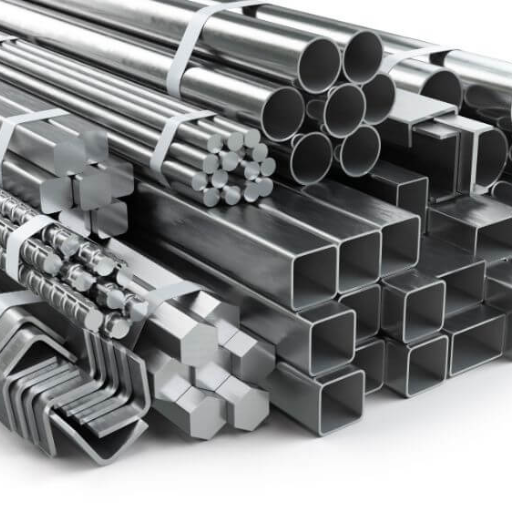
When thinking about shapes of steel, especially square steel tubing, it is important to consider the types and categories available. The most apparent is structural steel tubing, which is designed to be used in construction because of its strength and ability to withstand considerable amounts of weight. There is also mechanical square tubing, which is also very precise and is usually employed in cases where precision manufacturing is the objective. Another type is galvanized square tubing, which has a zinc coating for resistance to rusting and is therefore suitable for outdoor use or in places where there is a lot of moisture. Lastly, there is ornamental square tubing, which is popular with aesthetic features such as railings or some works of art, because of its smooth finish and eye-catching appearance. These differences determine how and where they are used, and in turn, will dictate the selection based on load-bearing capacity, environmental factors, and the purpose it is to be used.
Differences Between Mild Steel and Galvanized Steel
In my efforts to comprehend the difference between mild steel and galvanized steel, I prefer to simplify the process by outlining a few pivotal factors. This is their distinction:
- Composition
Mild steel consists mostly of iron and carbon. Because it does not have any protective layer, it is more susceptible to rust and corrosion if kept in moist or unfavorable environmental conditions. In comparison, galvanized steel is a type of mild steel that has been coated with a layer of zinc. This zinc layer provides outstanding protection as it acts as a barrier against corrosion.
- Durability
Despite the fact that mild steel is strong and versatile, its lack of protective coating is a major drawback in outdoor or wet conditions. Galvanized steel has greater durability in such affection-prone areas due to its zinc coating as it does not corrode and wear down even when subjected to water and humidity over long periods of time.
- Applications
Mild steel is easy to work with considering its low carbon content. It performs best under controlled conditions and is used for the manufacturing of automotive parts as well as structural components and general fabrication. Galvanized steel is preferred for outdoor use such as fencing and roofing due to it greater resistance to corrosion when compared to mild steel.
- Cost
Having no additional processes, mild steel is usually less expensive than galvanized steel. In some environments, however, the repair and replacement costs of rusted and corroded structures can make galvanized steel a better long-term investment.
- Aesthetic Appeal
Mild steel’s smooth surface makes it easy to paint or finish, increasing its decorative appeal. Galvanized steel serves its functional purpose well, but its distinct silver gray color from the zinc coating means it does not appeal to decorative applications unless further processed.
At the end of the day, what matters is how and where the material in question will be used. mild steel works just fine for dry indoor applications, however, galvanized steel tends to outperform and offers added peace of mind and durabilty for rust prone environments and weather conditions.
How Do Steel Square Tubes Compare to Other Shapes?
The benefits of Steel square tubes are that they have the same strength no matter how they are used and have a higher functionality when compared to other configurations. They are ideally suited for structural purposes since they offer exceptional resistance to torsion and bending compared to round or rectangular tubes. The time spent on fabrication is reduced since connections that require assembly are simpler due to the flat surfaces. Furthermore, the square shape is appealing from an aesthetic perspective and in how space is utilized within designs, making them efficient when used in a variety of constructions, engineering, and manufacturing projects.
Choosing the Right Steel Tube for Your Project
The scheduling starts with analyzing your application needs before moving ahead to selecting the right steel tube for your project. If it is a structural task that involves maximum strength, my recommendation is usually square or rectangular tubes because of their superior load-bearing and resistance properties. I often recommend round tubes when considering weight, as they are the most efficient in terms of strength and weight. Remember to consider material grade as well. Some grades are better for certain environments, such as high humidity or extreme temperatures. Emphasis on the determining factors at hand allows one to critically analyze the specific high-yielding steel grade and type that will suit the project.
How to Choose the Right Galvanized Square Steel Supplier?
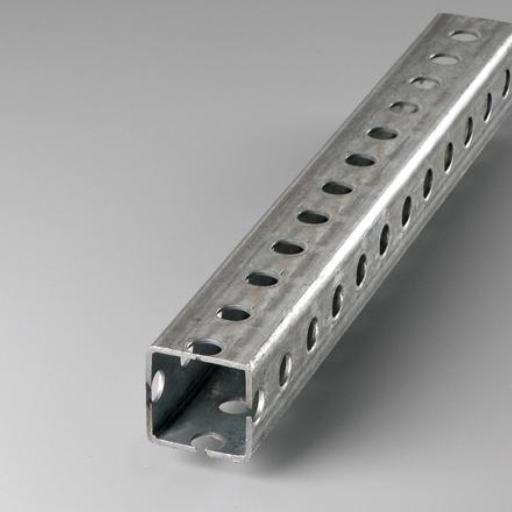
In selecting the appropriate supplier for galvanized square steel, reliability, service, and quality are the most important factors to consider. Check whether the supplier has certifications as documents of proven performance, as well as adherence to industry standards. Make sure that your supplier’s products have proper galvanization and the cut sizes are appropriate for your undertaking. Analyze their ability to deliver on schedule, along with the technical support to modify the order, if there is such a need. Also, analyze the reviews provided by other customers and their responsiveness to gauge if the partnership will be easy and dependable.
Factors to Consider When Selecting a Supplier
reliability and quality take top priority when choosing a supplier. First, I check their credentials and ensure they possess the necessary documentation. This is essential because without it, product quality cannot be guaranteed. I also check if they are capable of meeting deadlines because failure to do so can severely disrupt the flow of a project. Customization options, together with technical assistance, are also very important, especially for complicated or specialized tasks. Communication and response time are other areas of great importance to me, as without timely and precise communication, partnerships can become very tedious. Through these means, suppliers can meticulously confirm or refute my expectations.
How to Ensure Your Supplier Meets Quality Standards
The first step I take to ensure my supplier complies with quality expectations is to evaluate their documents and check whether they have maintained industry standards. This is a clear measure of their quality assurance effort. I obtain product samples and or visit the site to check these processes when it is feasible. Good working relationships with regular interactions allow me to understand the current state of their operations and manage potential issues proactively. Having communicated clear expectations on quality and having reviewed the resulting performance from time to time, maintain confidence that their work will continue to provide exceptional results.
Understanding Cost and Availability of Materials
Understanding the material costs and their availability requires looking into the market, suppliers, and production considerations. Comprehensive expenses are greatly impacted by the changes in the prices of raw materials, transportation. Additionally, assessing the market dynamics on a regional and global scale requires reflection on the dependability and consistency of the suppliers being considered. With a keen eye on relevant trends and shifts in the industry, building favorable supplier relationships allows an organization to proactively respond and refine procurement approaches as necessary.
Reference
- Galvanized Square Tube: A Complete Guide to Specifications, Standards, and Applications
- Galvanized Square Tubing 24-foot lengths – Houston
- Galvanized Steel Square Tube – Coremark Metals
Frequently Asked Questions (FAQs)
Q: What is galvanized square steel tubing?
A: Galvanized square steel tubing is a type of steel that has been coated with a layer of zinc to protect it from corrosion. This process extends the life of the tubing, making it a popular choice for various construction and industrial applications.
Q: How is galvanized steel tubing different from stainless steel?
A: Galvanized steel tubing is coated with zinc for corrosion resistance, while stainless steel contains chromium, which provides its own corrosion resistance without additional coating. Both have their distinct advantages depending on the specific requirements of a project.
Q: What are the common applications of galvanized square steel tubing?
A: Galvanized square steel tubing is commonly used in construction for structural support, framing, and fencing. It is also used in the automotive industry and for creating furniture, such as bed frames and tables, due to its strength and durability.
Q: Can galvanized steel square tubing be welded?
A: Yes, galvanized steel square tubing can be welded. However, it’s important to follow proper safety protocols, such as removing the zinc coating in the welding area and using appropriate ventilation, to avoid the release of toxic fumes.
Q: What is the significance of using galvanized square steel in home design?
A: Using galvanized square steel in home design offers a modern, industrial aesthetic and provides long-lasting durability. It is often used in building frameworks, railings, and even decorative elements like beams and furniture.
Q: How does the gauge of steel affect the properties of galvanized steel tubing?
A: The gauge of steel determines its thickness. A lower gauge number indicates a thicker steel, which provides greater strength and durability. Selecting the appropriate gauge is essential, depending on whether the tubing will be used for light or heavy-duty applications.
Q: Can galvanized square steel tubing be cut to size?
A: Yes, galvanized square steel tubing can be cut to size using appropriate tools such as a metal saw or a tube cutter. It’s essential to ensure clean cuts and proper measurements for precise applications.
Q: Is galvanized steel tubing suitable for outdoor use?
A: Yes, galvanized steel tubing is highly suitable for outdoor use due to its corrosion-resistant zinc coating, which helps protect it from the elements, making it ideal for fencing, railings, and other outdoor structures.
Q: What are the environmental considerations when using galvanized square steel?
A: While galvanized square steel is durable and long-lasting, environmental considerations should include the impact of zinc mining and processing. Opting for eco-friendly wood veneers or recycled materials in conjunction with steel can help mitigate environmental impacts.






